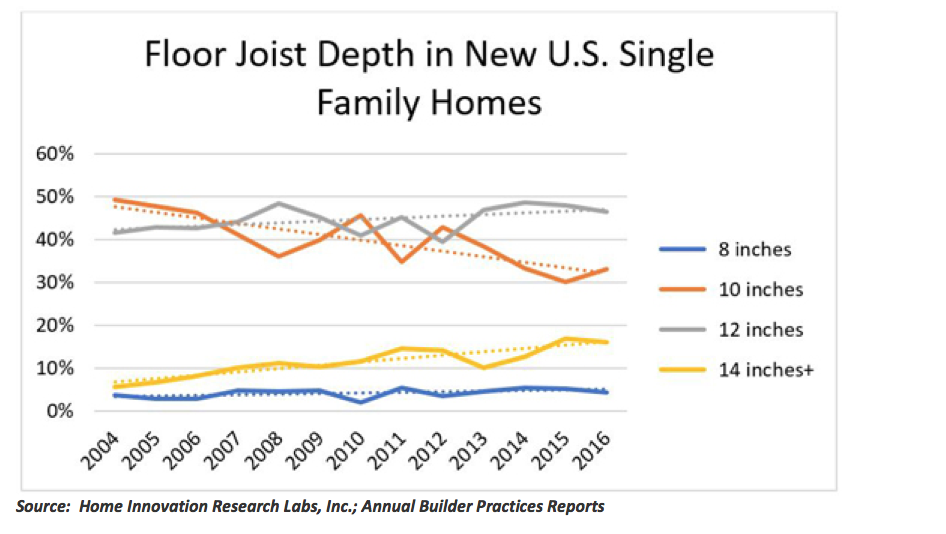Wood floor joists in new homes keep getting deeper. In 2004, more than half of wood floor joists in new homes were 10 inches deep or less.
Today, over 60% are 12 inches deep or more. Why are wood floor joists getting deeper? Here are some possibilities:
Tile & Stone Floors: Tile and natural stone floor finishes have grown from about 18% to 22% of new-home floor area in the past decade. Deeper joists make for stiffer floors, which minimize floor cracking and are less prone to flexing and vibrating.
Larger Homes: Single-family detached homes are bigger than a decade ago—averaging 2,300 square feet in 2004 to about 2,600 square feet in 2016. Bigger homes mean larger home footprints, which mean longer floor spans and deeper joists.
Two-Story vs. One-Story: Another explanation is the share of two-story vs. one-story homes built. Given comparable square footage, one-story homes have larger footprints than two-story homes and favor longer floor spans.
More I-Joists: Wood I-joists have grown in popularity from 43% in 2004 to 48% of all structural floors. Meanwhile, the dimensional lumber share of the floor joist market has declined from 41% to 36%.
Pickier Customers: Home Innovation’s director of market research, Ed Hudson, believes the No. 1 reason behind this trend is a more sophisticated market. Builders are more knowledgeable about how a floor should feel, and they have access to the design tools necessary to spec a better floor. Code-minimum structural floors are now considered by many to be a sign of poorly planned housing.
Weyerhaeuser gets much of the credit for this floor joist trend brought about by market education. The company’s extensive research into floor performance has broken new ground, and its TJ-Pro Rating system educates and provides builders with a tool to optimize floor performance.
Similarly, DuPont maintains a dominant market position with its Tyvek products because of its extensive research and market education. More than half of all housewrap on newly constructed homes now carries the Tyvek brand name.
These stories should serve as a lesson to manufacturers: By taking the lead in educating the market, you maximize market share, which improves the overall health of your market and provides consumers with better performing homes. Companies that want to play a bigger leadership role in their market should heed the examples of these and other market-leading companies.
Home Innovation can help companies identify market education opportunities. For more information, visit HomeInnovation.com/MarketResearchContact.



